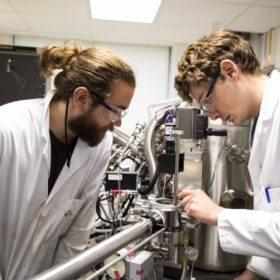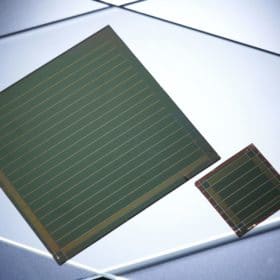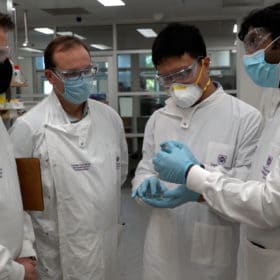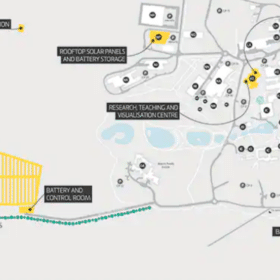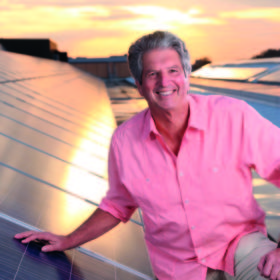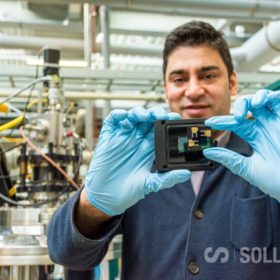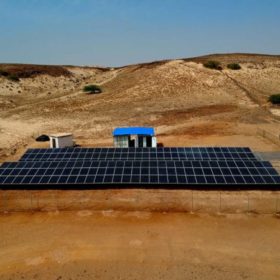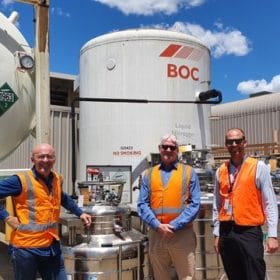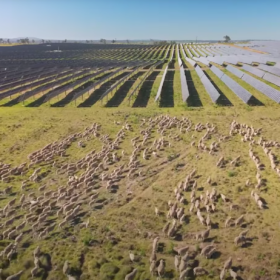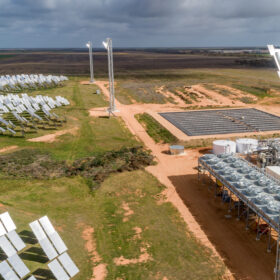Cracking the case for solid state batteries
Scientists in the UK used the latest imaging techniques to visualize and understand the process of dendrite formation and electrolyte cracking in an all solid-state battery. With new insight into the mechanisms by which these cracks form and ultimately lead to battery failure, the results could help direct the focus of future research into solid-state battery technology.
German researchers overcome main challenge for perovskite PV modules
Researchers in Germany claim to have overcome the primary hurdle in the development of large-area perovskite PV modules – scaling up from the cell to the module level. They achieved an efficiency of up to 16.6% on a module surface of more than 50 centimetres squared, and 18% on a module with an area of 4 centimetres squared.
Changing the metrics of desirability: Melbourne’s Burwood Brickworks achieves momentous certification
The eastern suburbs of Melbourne are now home to the most certifiably sustainable shopping centre in the world. But to think of it only in those terms hardly does the project justice – rather, Melbourne is now home to a building which defies the limits of its own concept, imploring people to reconsider the value metrics through which space, cities and perhaps even lifestyles are appraised.
Brisbane-based tech firm and University of Queensland team up to transform energy storage
The ‘Graphene Revolution’ is drawing near in energy storage, the sector where it is arguably needed most. Univeristy of Queensland scientists who devised aluminium-ion batteries with graphene electrodes have teamed up with Brisbane-based Graphene Manufacturing Group to push the technology into the commercial prototype phase, a potentially early marker for a technology that could transform energy storage.
Deakin University’s enterprising plans for its new microgrid
Microgrids afford an opportunity to essentially become a power station operator. That opportunity, says Dr Adrian Panow, the Director of Deakin’s Energy Initiative, unearths a number of urgent questions ranging from the technical all the way to the ethical. They are questions cross-faculty researchers at Deakin University, now home to a sizeable microgrid, plan to interrogate.
UNSW’s Prof Martin Green ups PV yield by cooling solar modules
In efforts to improve PV performance by helping modules keep their cool, the Martin Green team is going for 10 degrees lower operating temperatures. Cherry-picking the most practical approaches could deliver 50% extended project life.
Solliance hits record efficiency on perovskite/silicon tandem solar cell
The Dutch consortium has achieved the record result by combining, in a four-terminal tandem configuration, an 18.6% efficient highly near-infrared transparent perovskite with a prototype of a c-Si interdigitated back contact (IBC) silicon heteroJunction (SHJ) cell developed by Japanese electronics manufacturer Panasonic. The perovskite cell was also combined with other kinds of solar cells and other remarkable record efficiencies were hit.
Renascor finalises $15m capital raise, on track to be world’s first battery-grade graphite producer outside of China
South Australian company Renascor Resources this morning confirmed it had raised $15 million from institutional investors in Australia and abroad, enough to fund its Siviour Battery Anode Material Project up to the construction phase. The project is on track to become the world’s first integrated mine and purified spherical graphite operation outside of China.
PV-powered desalination system for water-poor, sun-rich rural areas
Italian start-up Genius Watter has developed a solar desalination solution that is claimed to be particularly suitable for remote areas with no connection to grid electricity. The system is able to produce up to 1,000 cubic meters of potable water per day at an opex of €0.20 per cubic meter.
Australian aerospace firm to launch into space race with green hydrogen
Queensland-based Hypersonix Launch Systems has announced a partnership with BOC and its Bulwer Island Renewable Hydrogen Production and Refuelling pilot project. The deal will see Hypersonix use green hydrogen produced by solar electrolysis as rocket fuel to launch re-useable satellites into lower earth orbit.
